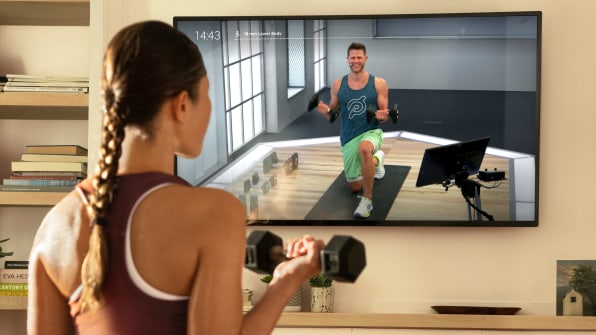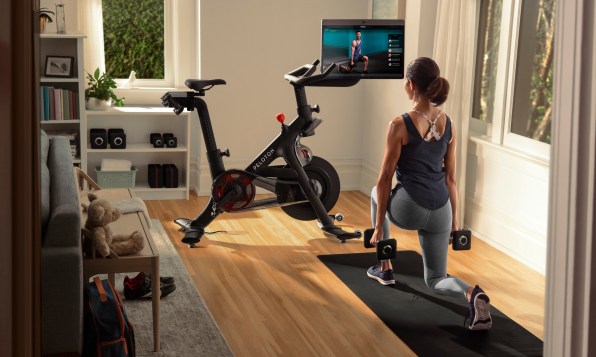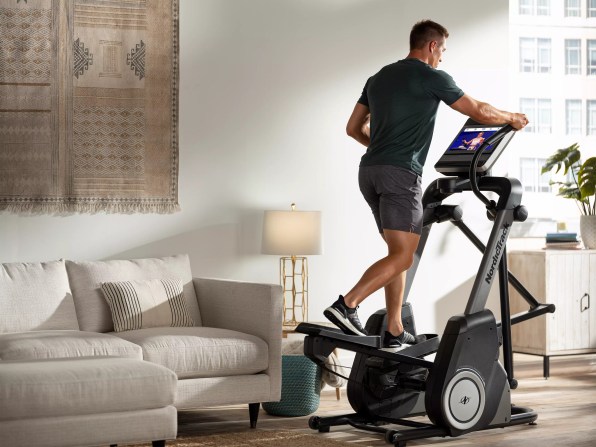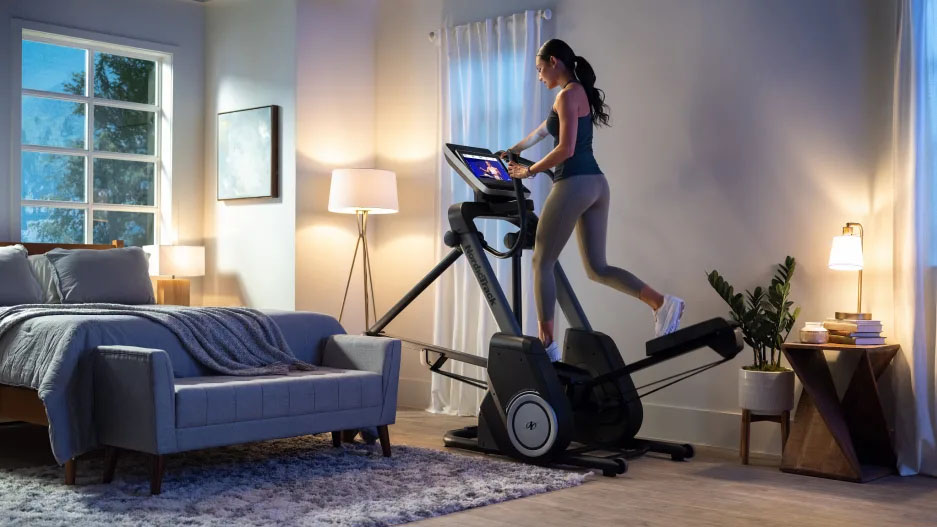[Photo: NordicTrack]
BY ELIZABETH SEGRAN
Source: www.fastcompany.com, January 2021
Some 59% of Americans don’t plan to return to a physical gym after the pandemic. What will fitness look like then?
In March, when my Orangetheory Fitness studio shuttered, I went into a funk, swapping out my afternoon workout for wine and cheese hour. It was fun at first, but I quickly realized I was spiraling into unhealthy habits. I explored other ways to get in shape—from getting 10,000 steps in with my Fitbit to testing some home gym equipment. Nine months later, I’m hooked on working out at home on my elliptical machine and with weights. I doubt I’ll ever renew my gym membership.
This has enormous ramifications for the future of fitness. TD Ameritrade found that 59% of Americans don’t plan to return to their gym after the pandemic, and analysts and industry insiders believe that gyms and fitness studios as we know them could become a thing of the past. This is a devastating blow to an industry that represents more than 40,000 health and fitness centers and employs 3 million trainers and other personnel.
THE PERFECT STORM
For the past decade, the fitness industry has boomed thanks to the growth of boutique studios such as Barry’s Bootcamp, SoulCycle, Pure Barre, and CorePower Yoga, which were competing with traditional big-box gym chains like Planet Fitness and Gold’s. Worldwide, industry revenue topped $96.7 billion in 2019, with 184 million members globally belonging to 210,000 health clubs.
But when COVID-19 struck, gyms were hit particularly hard. Small enclosed spaces full of people breathing heavily and dripping sweat quickly became unappealing, let alone unsafe. “We all learned what a petri dish gyms were to begin with,” says Franklin Isacson, cofounder of Coefficient Capital.

While most people didn’t expect a global pandemic to shutter gyms, several startups had already been betting that they could use technology to replicate the gym experience at home. Peloton, which launched its smart exercise bike in 2012, was chief among them. The company was perfectly situated to meet consumers’ needs when stay-at-home orders went into effect, and its business doubled in 2020, generating $1.8 billion in revenue. In September, it launched a treadmill, and in December it announced it was buying Precor, which makes commercial fitness equipment. Peloton now has 3.6 million users; 500,000 of them stream content from its app without one of its machines.Over the past two years, many other startups have jumped into the industry with their own connected home gym equipment, including weight training devices Tempo and Tonal, which have frequently sold out during the pandemic. But these machines aren’t for everyone, since they’re large and cost upward of $2,000. Some prefer to stream classes online through platforms like Obé or Alo Moves. The latter was launched by apparel brand Alo Yoga in 2017. Since the pandemic hit, yogis flocked to the app, quadrupling the subscriber base. (The company does not disclose its subscriber numbers.) “We knew that people would want to practice yoga from the convenience of their homes, but we expected a shift this great to take 10 years,” says Danny Harris, who cofounded Alo Yoga in 2007.
WILL GYMS GO THE WAY OF THE ARCADE?
Brad Olson, Peloton’s chief membership officer, believes that the shift to at-home fitness is comparable to how the gaming industry evolved. “We once played video games in malls, but then people discovered they could play at home and experience the same connection. Now everyone is asking for an Xbox or PS5 for Christmas,” he says. “The same is happening for fitness.”

Mirror, a wall-mounted machine that streams workout classes, was bought by Lululemon for $500 million in June. The platform’s revenue is expected to surpass $150 million this year. “What happened this year was an acceleration of what was going to happen anyway,” says Lululemon CEO Calvin McDonald. “It used to be hard to work out at home, but Mirror and others have developed technology that makes people feel connected to one another, which makes it easier to stay engaged.”Fitness routines are hard to create and change, but the Consumer Trends report suggests that the pandemic forced people to create new ones. “Many people have discovered a hybrid solution that works really well,” Isacson says.
FITNESS ANYTIME, ANYWHERE
Colleen Logan, head of marketing at NordicTrack’s parent company, Icon Health and Fitness, believes that this hybrid approach to fitness will actually create a much better experience for the consumer. Many experts say it’s important to have variety in your workout routine, and the pandemic has introduced people to options they’d never tried before. “More people have figured out how to work out at home and they also value getting exercise outdoors,” Logan says. “When gyms open up again, that will provide yet another experience. I see a world where it’s easier to work out anytime, anywhere, whenever you have the time for it.”
INSTRUCTORS TAKE BACK THEIR POWER
Even if gyms do bounce back after this crisis, the data suggests that a portion of their members won’t return. Chains like 24 Hour Fitness, Gold’s Gym, and the owner of New York Sports Clubs have already filed for bankruptcy and collectively laid off hundreds of employees. But 80% of the more than 40,000 clubs in the U.S. are small businesses; many have already closed their operations or are on the verge of doing so. This will have broad implications, not just for gyms but for millions of fitness instructors, many of whom were laid off during the lockdowns. Already, some of these instructors have used the pandemic as an opportunity to strike out on their own.
Alexandra Bonetti, founder and CEO of tech startup Talent Hack, says she’s seen a spike in instructors joining her platform, which connects them directly with clients without the gym as a middleman. Bonetti launched the company after nine years of owning a fitness studio in New York, where she observed tension growing between gyms and instructors. “It was so clear to me that clients came in because they felt a bond with a particular instructor,” she says. “And yet many instructors didn’t feel like they had the autonomy to manage their relationship with the client.”

When they were cut loose from their contracts with gyms, many instructors began offering Zoom classes and asking customers to pay them via Venmo. (The Talent Hack platform is designed to make this experience more seamless.) Bonetti believes that this could shake up the industry in more profound ways, where instructors have more power than they did before. She likens the emerging model to the music industry, where musicians have their own brand but can work with record labels, whose job is to market them to the consumer. “There was already a fracture in the industry, and the pandemic just deepened it,” she says. “A new business model is emerging.”We’re already seeing this play out on the fitness apps. Olson says Peloton members have strong affinities for particular instructors. “We encourage them to build a relationship with that member, both during the class and offline on social media,” he says.

